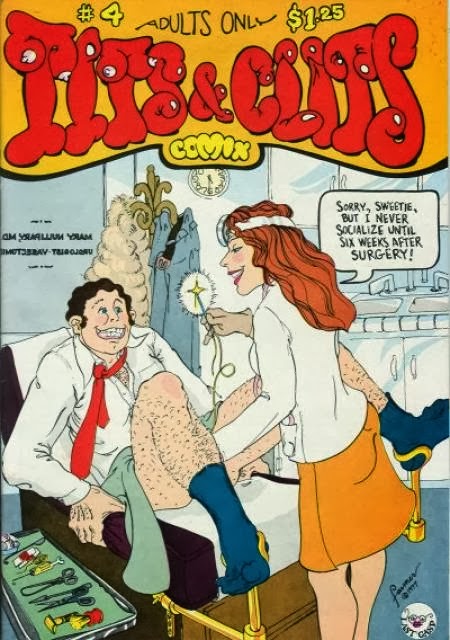So the Underground comics are super interesting. I was
really impressed with their honesty and gritty, yet silly nature. I read some
of the Tijuana Bibles and thought they were kinda cheesey (not that porn these
days isn’t) but they’re still interesting because they’re historical and in
comic form, which lends to their ridiculous nature.
I also read Gay Comix, and was really happy to see that they
were honest, non-stereotypical stories written by ACTUAL gay people. I enjoy
reading about LGBT characters and was a little shocked that these stories were
being told back then. I mean, even today those kind of stories are not main
stream. But I guess that’s what happens when people are just putting their
stuff out there, regardless of what mainstream “acceptable” comics are doing.
Another thing I loved about these comics were women’s
stories. The story in Tits and Clits about the woman who was paying men to have
sex with her after misinterpreting a conversation about prostitution was
hilarious. It communicates that women, despite what our culture seems to think,
actually ENJOY sex. Who knew? I was also very impressed with the stories of
lesbian relationships in Tits and Clits as well as Gay Comix. Thank GOD we
weren’t subjected to yet another straight male lesbian fantasy that degrades
and over-sexualizes the women involved. It was very refreshing.
As for Robert Crumb, I like reading about his experiences,
but I still get a really creepy vibe from him. He obviously loves women, but he
expresses it in ways that tend to make me uncomfortable. I think his art has
something to do with it. He’s a skilled artist but I honestly think his art is
gross-looking! I know he’s this huge amazing artist but that’s just how I feel!
All in all, I think the comics from this era are so
important because they tell it like it is. They don’t sugarcoat anything and it
captures a generation of people in a specific time in history. The stories
being told are unique and represent real people, whether they be homosexual,
women, drug-addicts, or all of the above. Power to the people.





